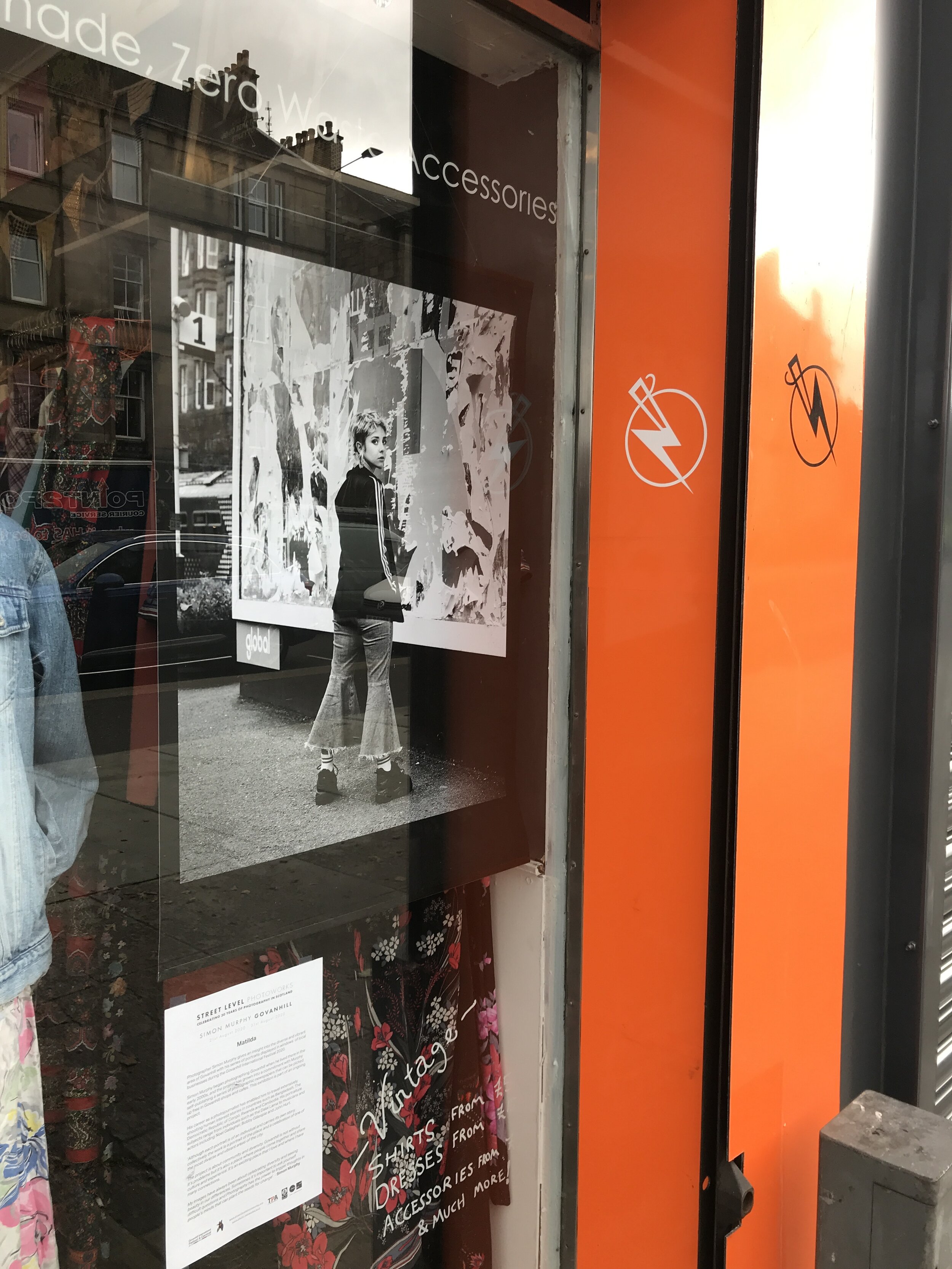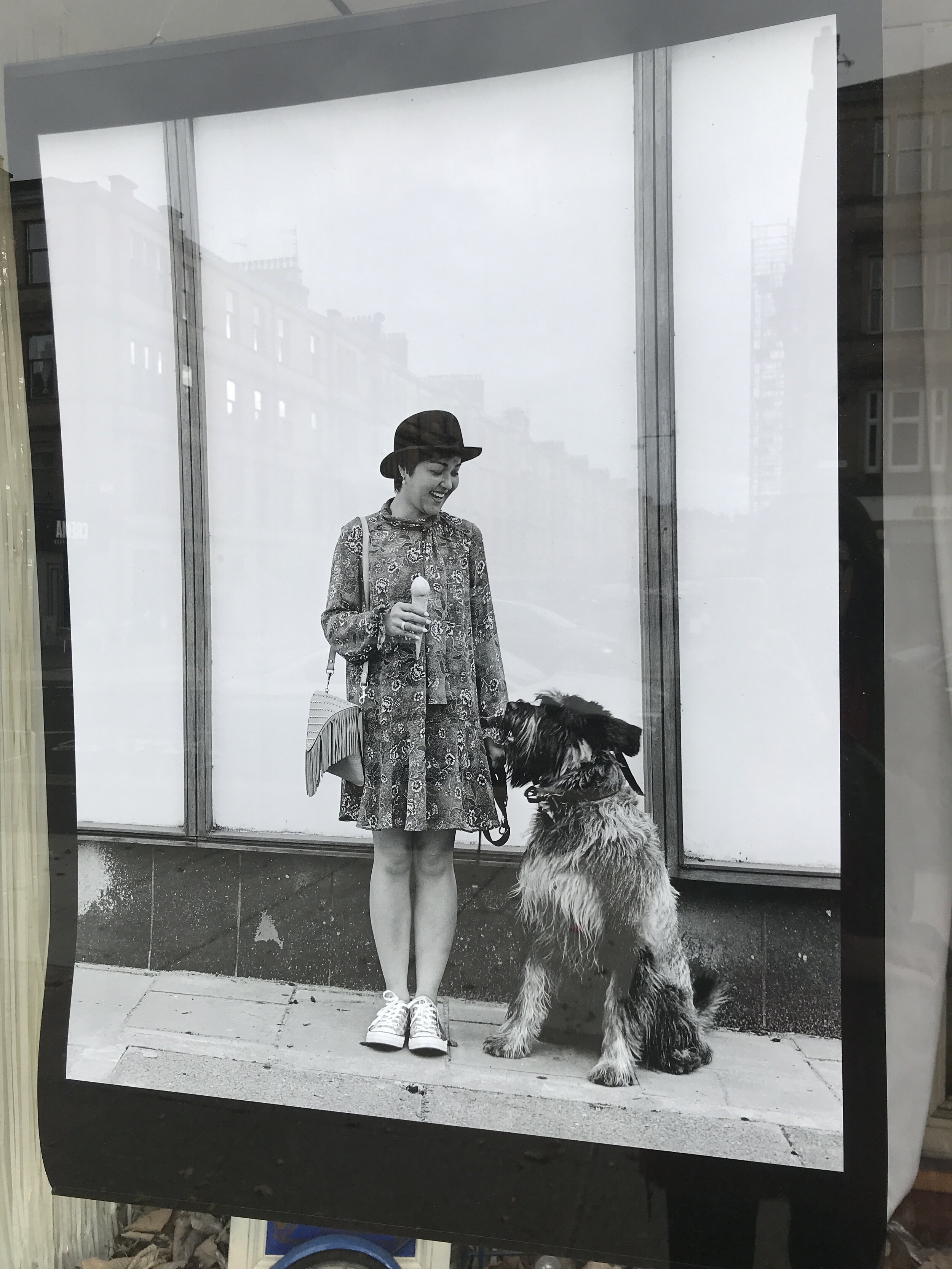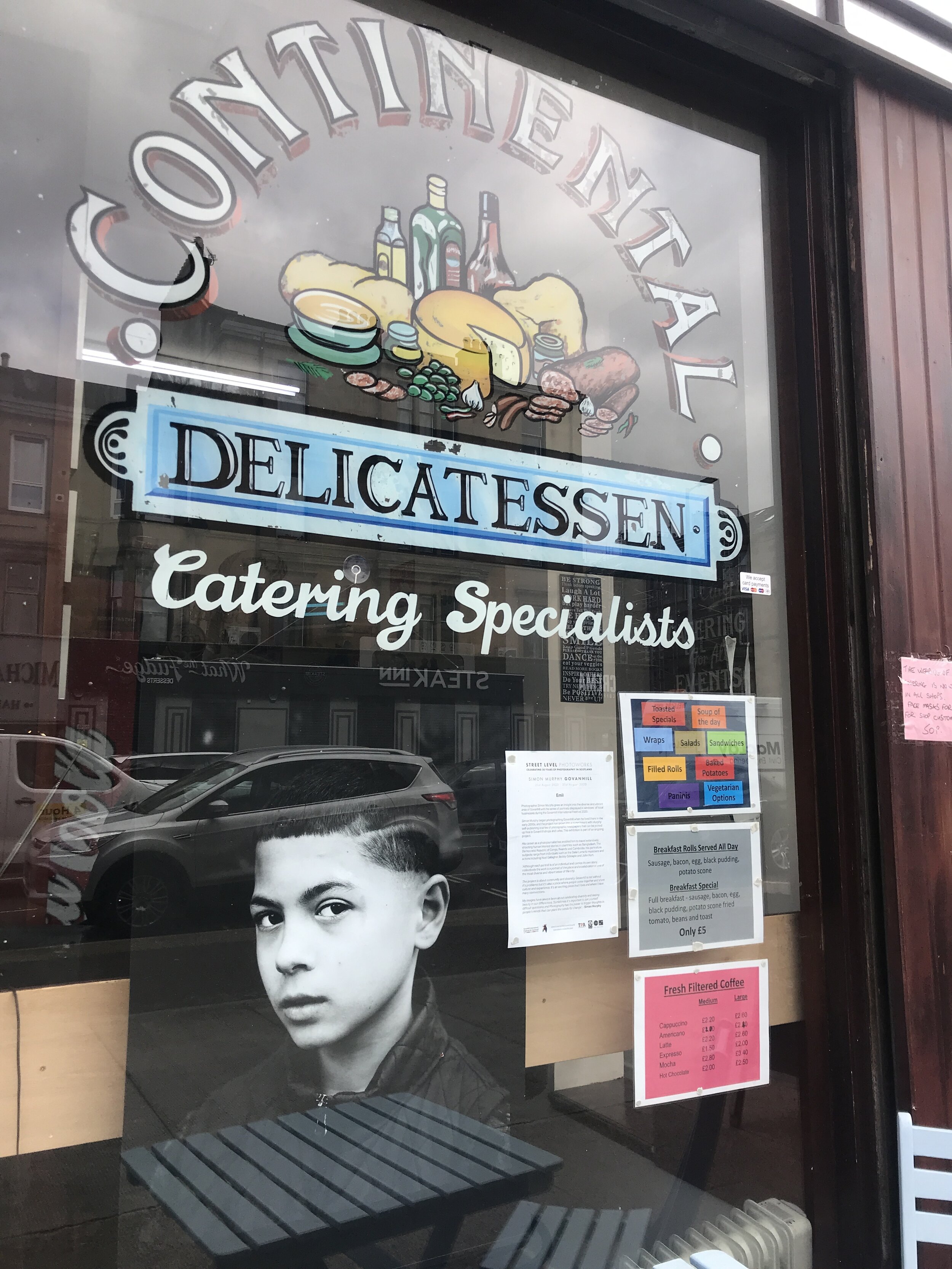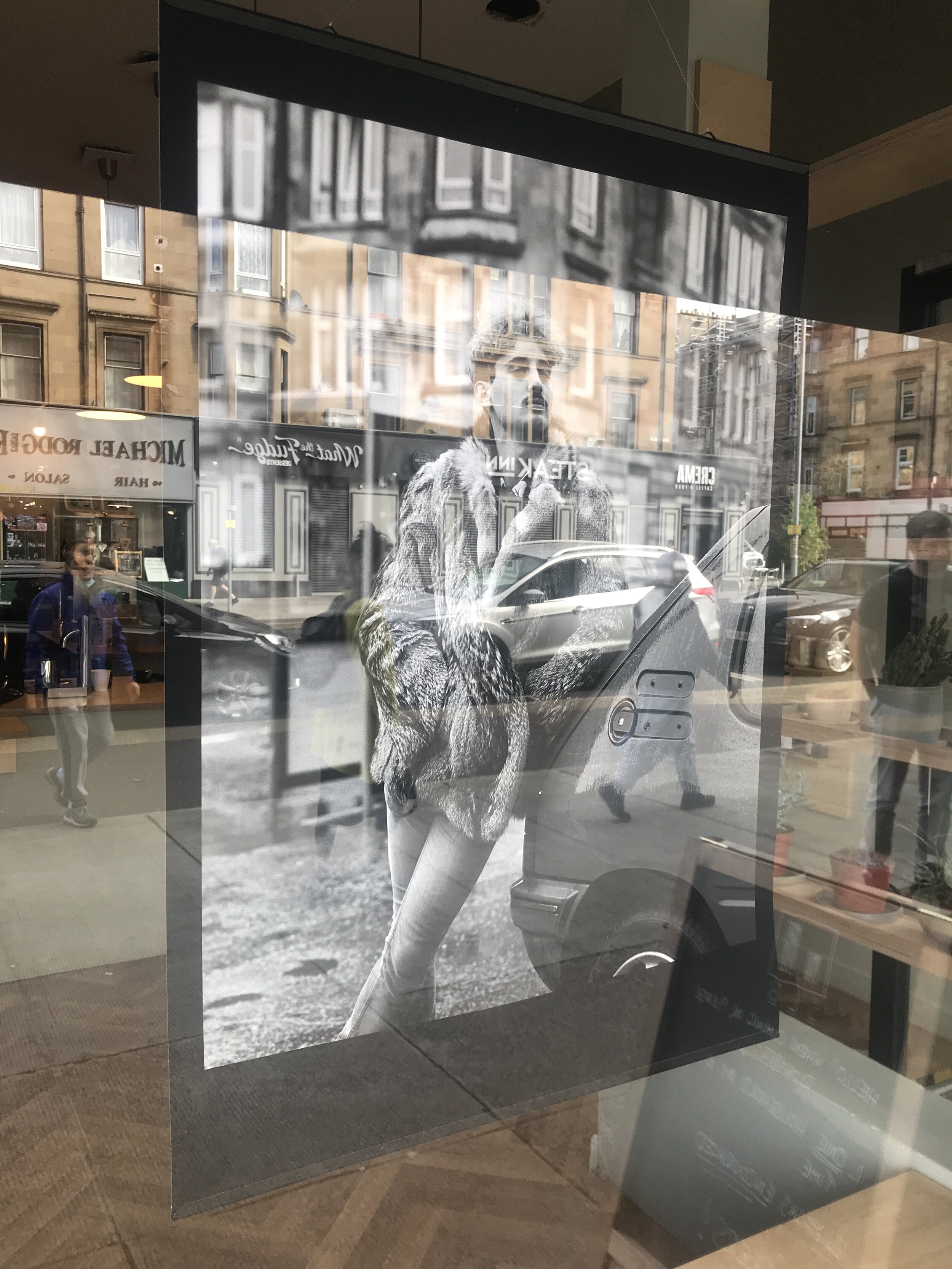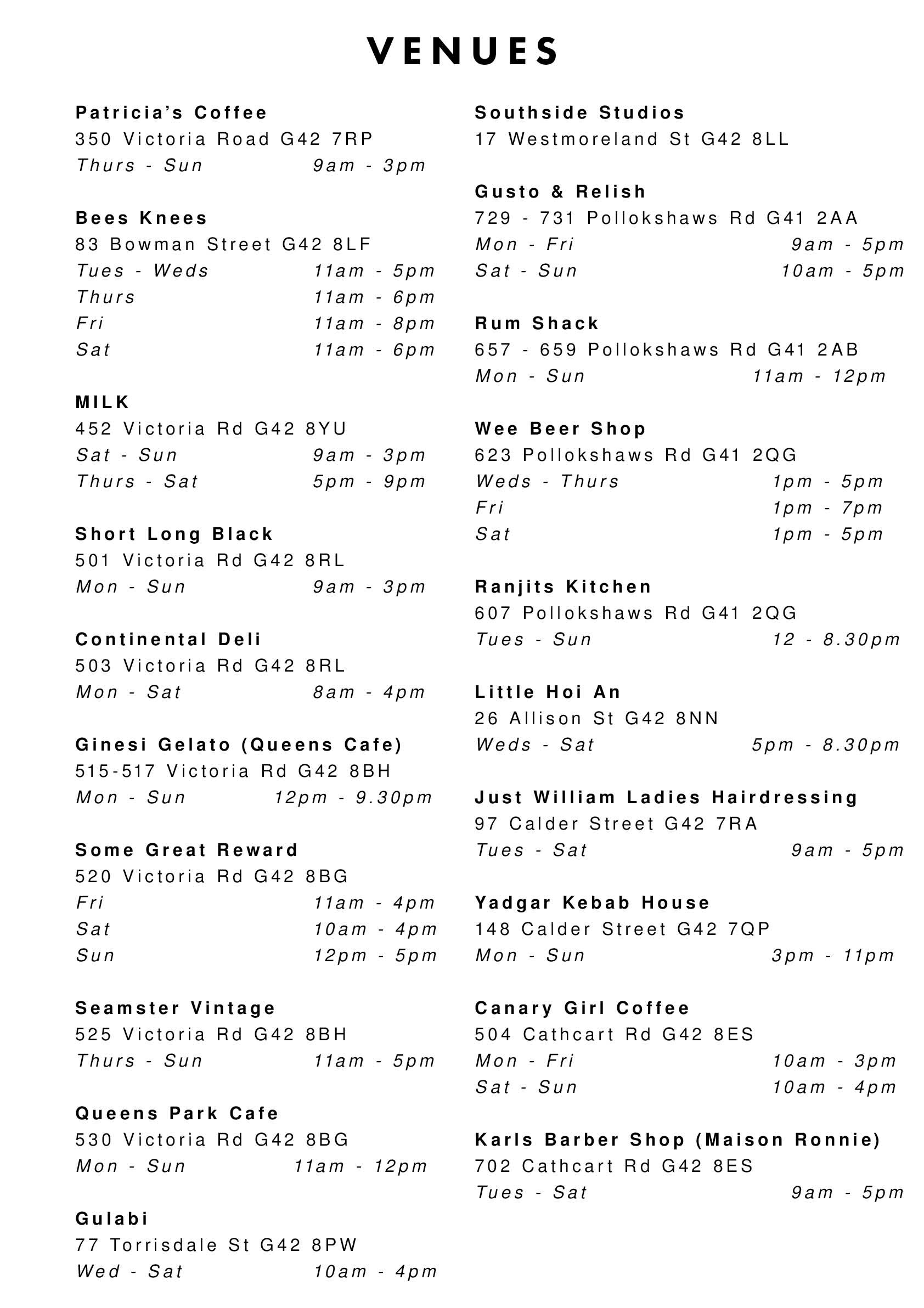Portrait of a Place: Simon Murphy's Govanhill
by Rhiannon Davies
“You have to walk slowly, become part of the place. Smile at people, and if you see something you like about someone, something that makes you want to photograph them, tell them.”
Simon Murphy is sharing tips with a group of young skateboarders and amateur photographers outside the Queen’s Park Arena, having just taken their pictures. The sun is beating down and, for his portrait, Luke stood shirtless, jeans slung low, his board in one hand and a cigarette dangling from his lips. It’s a look that exudes timeless cool, speaking of languid summers and the counterculture of youth. Murphy captures the moment in a roll of black and white film.
Luke | Photo by Simon Murphy
A new exhibition of Murphy’s work, ‘Govanhill Street Level’ is on until 31 August as part of the Govanhill International Festival. Twenty portraits of local characters stare back at you from A1 prints displayed in shop windows between Cathcart and Pollokshaws Road.
Speaking to Greater Govanhill, Murphy explains why the only text included is their first names. “They’re street portraits – it’s what you see, not their backstory. It could be a five-minute meeting. The way I see this project is that it’s a portrait of the place, not an individual, which with the diversity of it, hopefully paints a picture of the area.”
From deep wrinkles carved into weathered skin to tousled hair hanging across a young face, there’s an unpolished feel to these portraits. Murphy doesn’t shoot classic beauty. Instead his eye is caught by people who have some character: “I’m attracted to images of people that are a little bit rough around the edges, rough diamonds; people that are a little bit gritty. I think it’s because I identify with them. I like the underdog.”
There’s something distinctly empowering in the way that Murphy captures his subjects, and this is important to him, particularly when photographing women: “I never want to photograph a woman with the male gaze. There’s been plenty of strong women in my life. Usually I shoot from below – you find that a lot in corporate photography. Businessmen love that because it makes them look powerful; they’re above you. So everybody’s above me. My subjects are all above me.”
He explains that it’s also to do with the nature of the camera. He shoots with film using a Mamiya medium format camera with a waist-level viewfinder. In a world used to the one-handed thumb flick of a smartphone selfie, there’s something markedly old-fashioned about seeing Murphy bending over his box-like camera. It’s almost reminiscent of old Victorian portraiture techniques.
Just as in Victorian portraits, there are no smiles in Murphy’s shots. His subjects meet your gaze head on, with a serious stare. “The image should always speak,” says Murphy. “If you’re using other people in your work, it’s a collaboration. It’s not about the artist, it’s about the place. I included people’s first name as a recognition of that.”
Murphy has roots in Govanhill, although he no longer lives in the area. He began shooting Govanhill as part of a college assignment around 1999. “My Granny lived here, my Dad, uncles and cousins were all brought up here. I’ve lived here on and off throughout my life. It feels part of me. That’s why I shoot this project.
Murphy remembers that: “When I lived there, it was always joked that it was Bengal and Donegal – the south Asian side and the Irish side. Before that, there were Italians and Jewish people. It’s always been where people arrived and then spread out from. In that sense it’s the same.”
However, with different waves of immigration, Govanhill has never stood still, which Murphy acknowledges: “It’s changed so much in the past year, that’s why documenting it is so important. I can shoot something one week and the next week it’s gone.”
“There’s so many different nationalities here. There’s always something to see. It’s customary for Roma people to stand in the street. That’s gone from Scottish culture. That’s why I like shooting here – I see more people and get these interactions.”
Walking down Allison Street, Victoria Road, Dixon Avenue with Murphy is a chance to see the streets through fresh eyes; the unusual posture of a man waiting at a crossing, the striking hairpiece of a woman pushing a pram, the dark eyes of a youth eating sunflower seeds. Murphy walks at a slow pace, so nothing is missed and opportunities for interaction are created. He explains people skills are crucial in street photography; you have to gain someone’s trust in an instant.
“When you approach someone, they read you within seconds and know your intention. I don’t think there’s much masking that. They see through you.” Despite having done this for years he says that whenever he does go up to someone he still feels the fear: “In that moment all those questions flash through my mind; ‘what if they say no?’, ‘what if they think I’m weird’, ‘what if they question my intentions?’, ‘what are my intentions?’. But I’ve learned over the years to suppress all that and just think positive about it.”
Govanhill Street Level feels like an honest depiction of the neighbourhood. It isn’t trying to beautify or run down the area. Instead all life is present; young and old, rich and poor; different cultures set against familiar backdrops. And despite the ever-changing nature of the area, the tenement brickwork, shuttered shops and the tree lined avenues of Queen’s Park all serve to firmly root Murphy’s work in his Govanhill.
Govanhill Street Level is on as part of the Govanhill International Festival until 31 August 2020. More details. Full details of all the locations in the venue list below.
To find out how you can pick up an exhibition poster signed by Simon Murphy, check out Govanhill Go Instagram stories.


